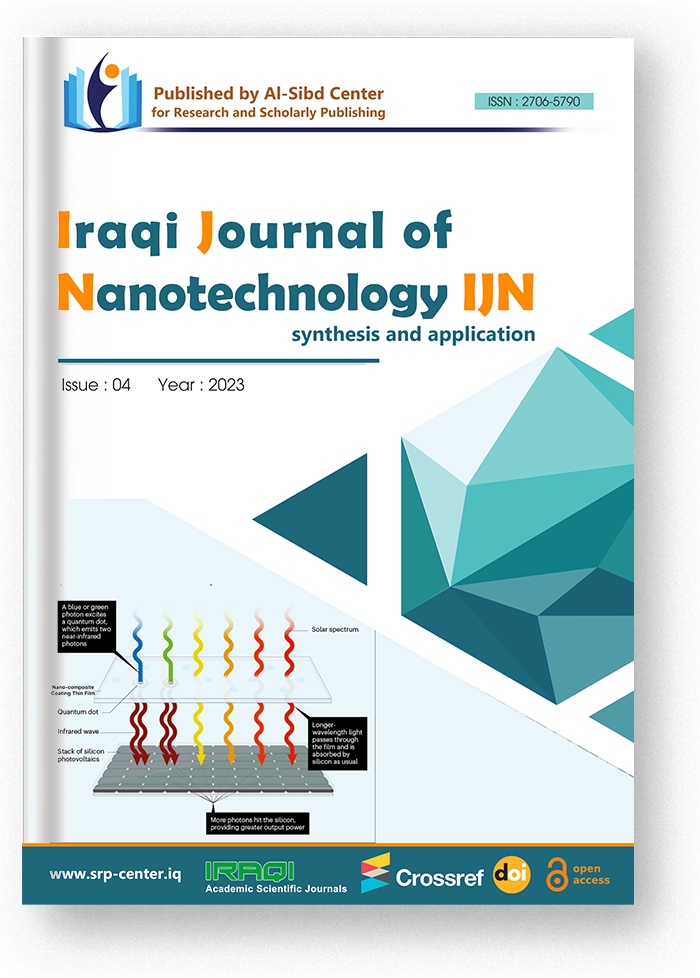Synthesis, Optical and D.C Electrical Characterization of (Pomegranate/PVA/TiO2) Ternary-Nanocomposites, As a Window to Improve Solar Cell Performance
Synthesis, Optical and D.C Electrical Characterization of (Pomegranate/PVA/TiO2) Ternary-Nanocomposites, As a Window to Improve Solar Cell Performance
Abstract
This paper aims to fabricate a nanocomposite made of polyvinyl alcohol, titanium dioxide, and natural pomegranate dye that can function as a sunlight sensor for solar cells. The thin films' structural, optical and electrical properties of (Pomegranate/PVA-TiO2) were studied. Images from (FE-SEM) taken at a concentration of 0.3 weight percent revealed the structural features of the material., the surface of the (Pomegranate/PVA-TiO2) nanocomposite films demonstrations many aggregations or chucks arbitrarily dispersed of (TiO2) with grain size (47-55) nm. With an increase in natural dye content, transmittance decreases. Pomegranate dye had the most prominent peaks, measuring (76%) at a concentration of 1 ml. All optical constants, including parameters such n and k for transparency and extinction, r and i for real and imaginary dielectric constants, and electrical conductivity for optical conductivity, rise with pomegranate dye concentration. The results showed that the electrical conductivity at a concentration of (4 ml) recorded the greatest possible (6.4×10-6) (Ω.cm)-1, and the activation energy decreased with increasing concentration of pomegranate dye (0.29-0.20) eV. Then a solar cell was prepared from SnO2/Si, and the films were deposited on it, and the efficiency results were. After being coated with (Pomegranate/PVA-TiO2) nanocomposites, the efficiency (ƞ) increased from (4.3-4.75). In addition to the increase in current (Isc) from 23 to 30 mA/cm2. The final results showed that the (Pomegranate/PVA-TiO2) nanocomposite possesses a high transmittance, low activation energy and is sensitive to light in the Vis and IR regions, making it suitable for optical application.
Copyright (c) 2023 Iraqi Journal of Nanotechnology

This work is licensed under a Creative Commons Attribution-NonCommercial-NoDerivatives 4.0 International License.




